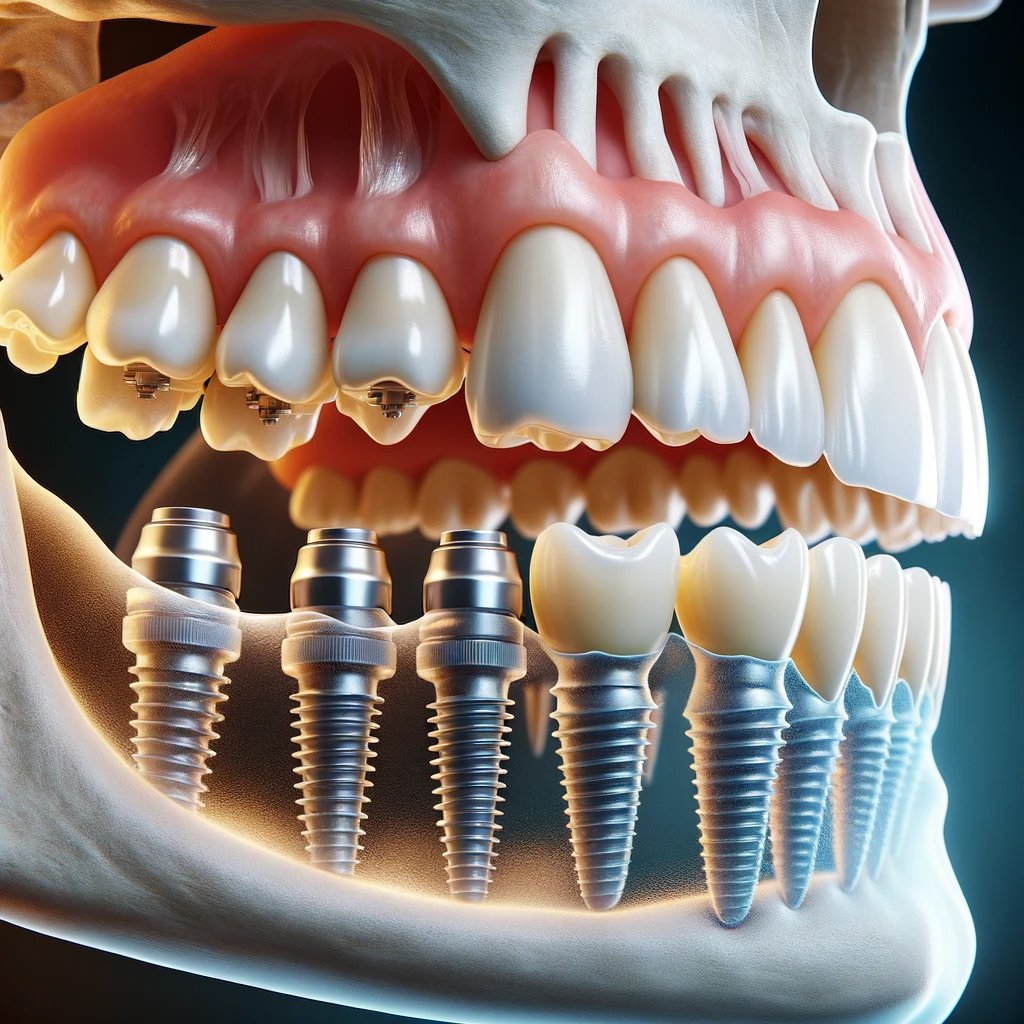Indicators on Dental Sense You Should Know
Unknown Facts About Dental Sense
Table of ContentsSome Ideas on Dental Sense You Need To Know3 Easy Facts About Dental Sense ShownSome Known Incorrect Statements About Dental Sense The smart Trick of Dental Sense That Nobody is Talking About
are medical tools operatively implanted right into the jaw to recover a person's ability to chew or their look. They supply support for synthetic (phony) teeth, such as crowns, bridges, or dentures. When a tooth is lost as a result of injury or illness, an individual can experience complications such as fast bone loss, malfunctioning speech, or modifications to chewing patterns that result in discomfort.Oral implant systems are composed of an oral implant body and dental implant joint and may also include an abutment fixation screw. Root canal procedure. The oral implant body is operatively inserted in the jawbone instead of the tooth's origin. The oral implant joint is normally connected to the implant body by the abutment addiction screw and expands with periodontals into the mouth to support the connected fabricated teeth
(https://dentalsense1.creator-spring.com)Framework of The Dental Implant System selecting dental implants, talk with your dental company about the potential advantages and risks, and whether you are a candidate for the procedure. Points to consider: Your general health and wellness is a vital factor in establishing whether you are an excellent prospect for oral implants, how much time it will require to heal, and for how long the dental implant might remain in area.
Smoking cigarettes may influence the healing process and decrease the lasting success of the implant. The recovery procedure for the implant body might take numerous months or longer, during which time you generally have a short-lived abutment in area of the tooth. the dental implant procedure: Carefully adhere to the dental hygiene guidelines given to you by your oral company.
About Dental Sense
Implant failing can cause the need for one more operation to repair or change the dental implant system. Restores the ability to chew Restores cosmetic appearance Helps keep the jawbone from shrinking due to bone loss Protects the health of the bordering bone and gum tissues Aids keep adjacent (neighboring) teeth stable Improves lifestyle Damage to surrounding natural teeth during dental implant placement Injury to the surrounding tissues during surgical procedure, such as sinus opening Injury during surgery (as an example, fracture of bordering jawbone) Poor feature, such as seeming like the teeth do not attack with each other generally A feeling that the tooth is loosened or twisting in position arising from a joint screw loosening up Implant body failing (looseness of the dental implant body) as a result of systemic infection, which might be more probable in people with unrestrained diabetes as a result of local infection in bone and gum tissues supporting the dental implant body because of postponed recovery, which may be a lot more most likely in individuals who smoke Problem cleaning the gum tissues around the dental implant, leading to bad oral health Unattended gum illness Post-surgical numbness as a result of nerve impingement or damages Constantly inform health and wellness treatment carriers and imaging service technicians that you have oral implants prior to any magnetic vibration imaging (MRI) or x-ray procedures.
FDA is not familiar with any type of damaging occasions reported for MRI or x-ray procedures with oral implants. Dental implants systems are typically constructed from materials that follow global consensus standards of the International Company for Standardization (ISO) or ASTM International. These criteria have information of what makes a risk-free material.

A dental implant is a framework that replaces a missing tooth. With screw-like gadgets, the doctor inserts an implant into the jawbone, and it serves as an anchor for a fabricated tooth, called a crown. A tool called a joint attaches the artificial tooth to the dental implant. The crown is custom-made to fit the person's mouth and match the shade of their teeth.
Dental Sense - Questions
Some individuals are not eligible for dental implant surgery. It is for oral specialists to run on individuals with: severe illnessuncontrollable metabolic diseasebone or soft cells condition or infectionIf these problems are solved, a person can have the surgery. In, oral cosmetic surgeons refrain from operating people with: If individuals with any one of the above undergo oral implant surgery, there is a greater danger of the implant failing.

Dental implant surgery is an individualized procedure. It's not the very same for everyone. But the complying with provides a basic introduction of what you can anticipate your dentist, oral doctor, periodontist or prosthodontist to do: Position the dental implant operatively. Provide you time to recover. Connect the article and final crown, bridge or denture.
Next off, your doctor will meticulously position the dental implant right into your jaw. If your implant is near the front of your mouth, your dentist will certainly make a short-lived tooth for you to use until you recover.
Some Known Factual Statements About Dental Sense
During the healing stage, your jawbone ought to fuse to the oral implant. This procedure can take anywhere from three to 9 months.
When your implant heals, your dental practitioner can connect the joint (little adapter post) and your final repair (crown, bridge or denture). This normally takes concerning one hour to finish and may need a 2nd small surgery. You shouldn't really feel any kind of pain throughout your oral implant procedure since your provider will utilize medicine to numb your periodontals.